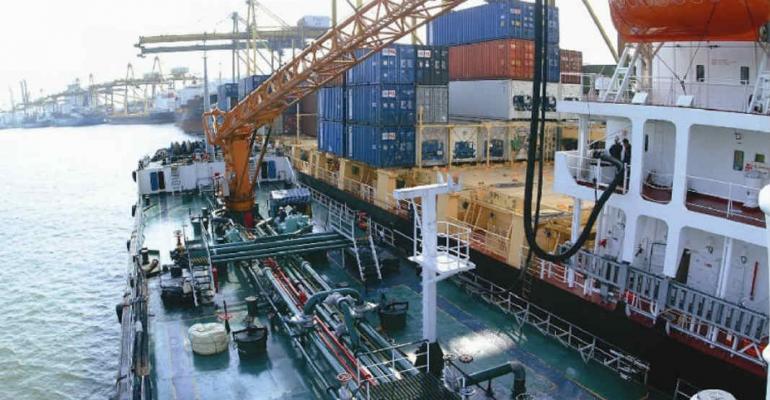From 1 January 2020, ocean-going ships will be required to burn bunker fuels with a maximum sulphur content of 0.5%, down from the current cap of 3.5%, under IMO’s Marpol Annex VI regulation.
Shipowners broadly have three options to comply with the upcoming regulation, namely switching to compliant fuels, install exhaust gas cleaning systems or scrubbers, or simply fail to comply with regulations.
“We estimate that by end-2020 there will be around 2,800 scrubbers installed consuming 690,000 bpd of high sulphur fuel oil (HSFO). In addition, we expect non-compliance to retain 860,000 bpd of HSFO demand in 2020. This will come from areas where compliant fuel will not be readily available, or with low monitoring,” Rystad Energy stated. The consultant, however, did not specific the areas of low monitoring or where compliant fuel will not be readily available.
Last month, the International Energy Agency (IEA) forecast that the non-compliant HSFO demand will be at 710,000 bpd, lower than Rystad Energy’s projection.
Read more: FONARs not a ‘free pass’ to use non-compliant fuels from 2020, ICS warns
Rystad Energy further estimates that around 700,000 bpd of very low sulphur fuel oil (VLSFO) will be available in 2020, rising sharply to 1.3m bpd in 2025.
“In 2020, we estimate that another 600,000 bpd of marine fuel demand will be satisfied by blends manufactured from existing low sulphur fuels, middle distillates and HSFO, which we call ‘MGO and FO blend’,” the consultant said.
“The share of VLSFO and other compliant fuel oil blends will be initially low, as shipowners seem reluctant to adopt the new fuel immediately; first, they aren’t confident that these fuels will be widely available already in 2020, and second, because they are unsure if the low sulphur fuel oil offered at different ports will be compatible.”
Rystad Energy added that a small share of around 15,000 bpd of the bunker fuel demand will be met by other fuels such as LNG.
Copyright © 2024. All rights reserved. Seatrade, a trading name of Informa Markets (UK) Limited. Add Seatrade Maritime News to your Google News feed.


